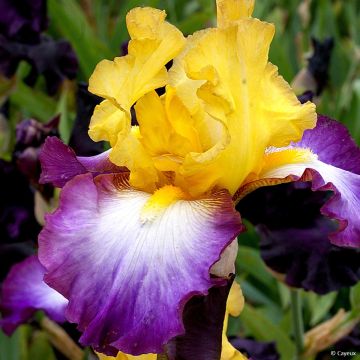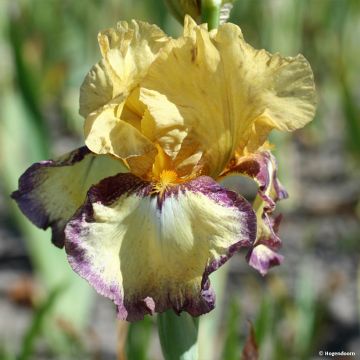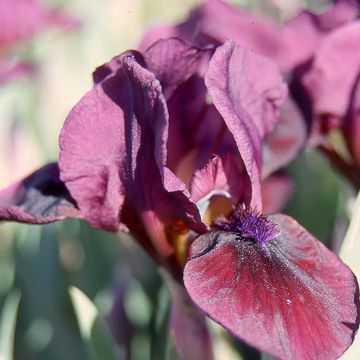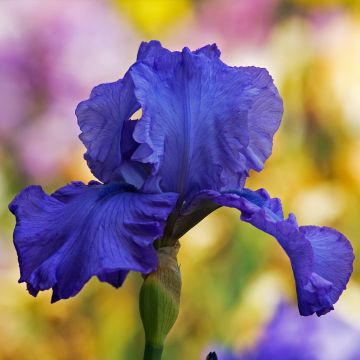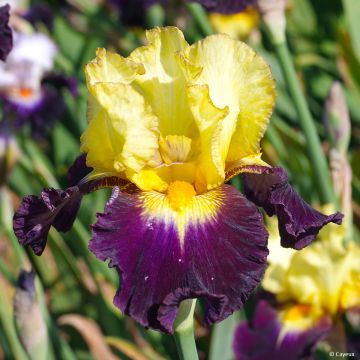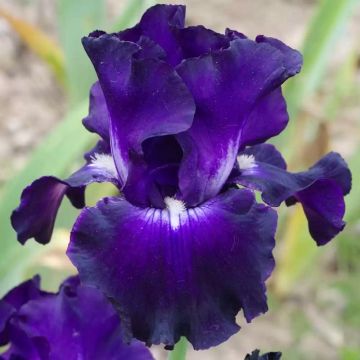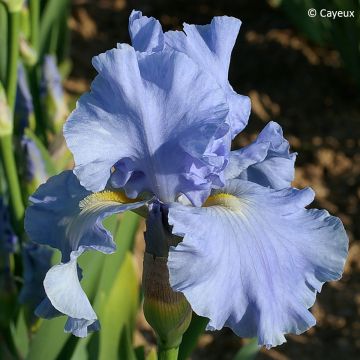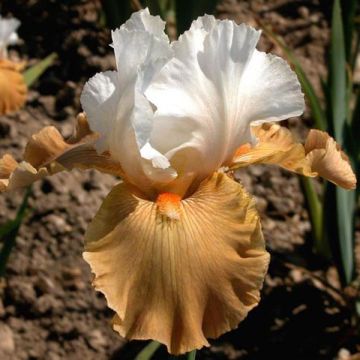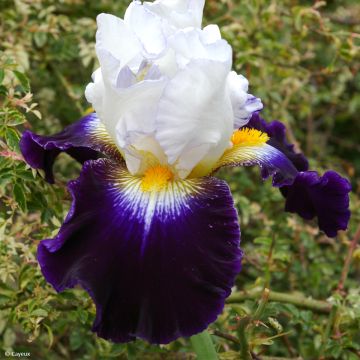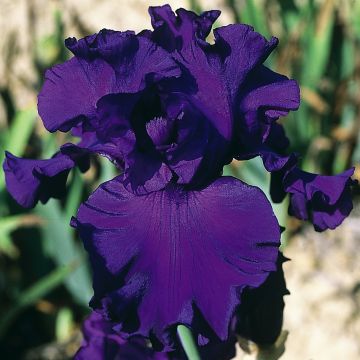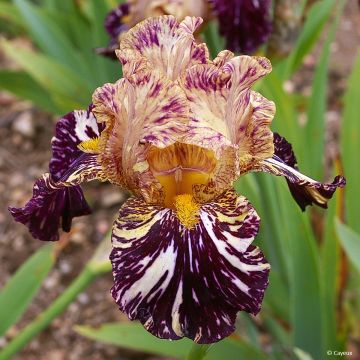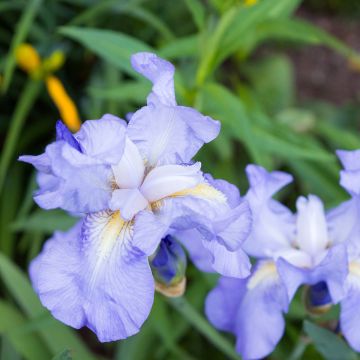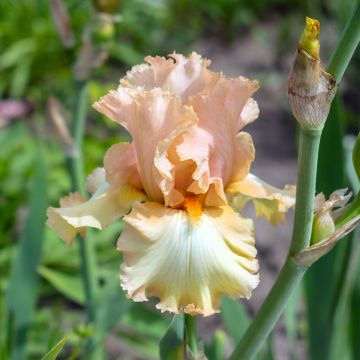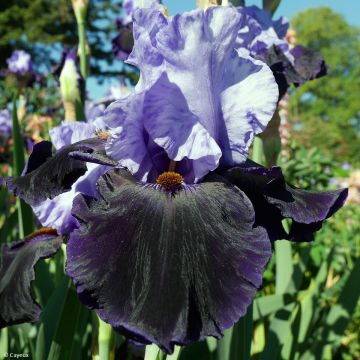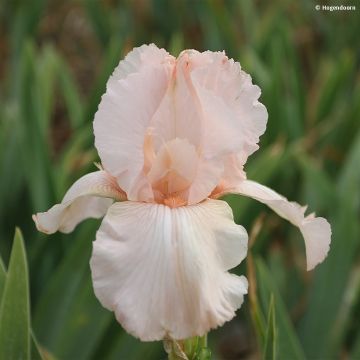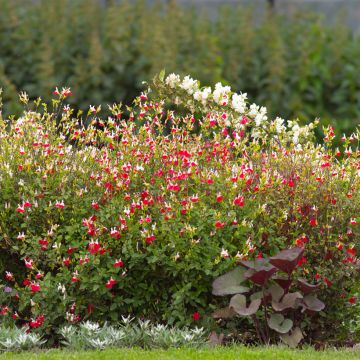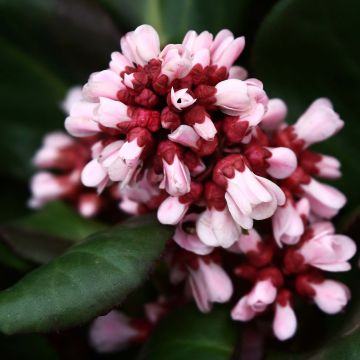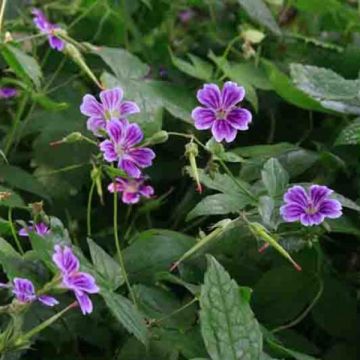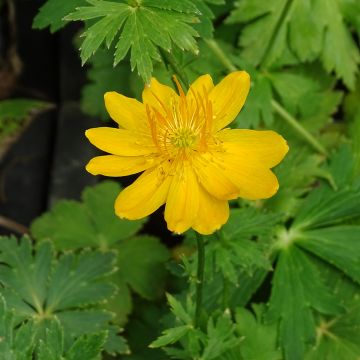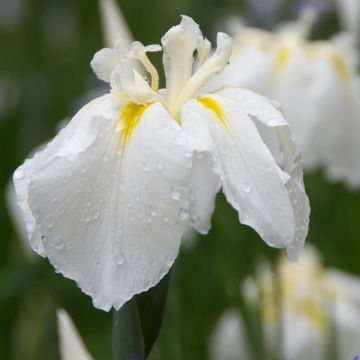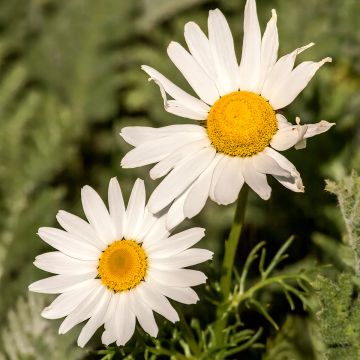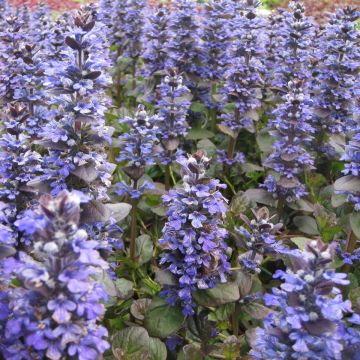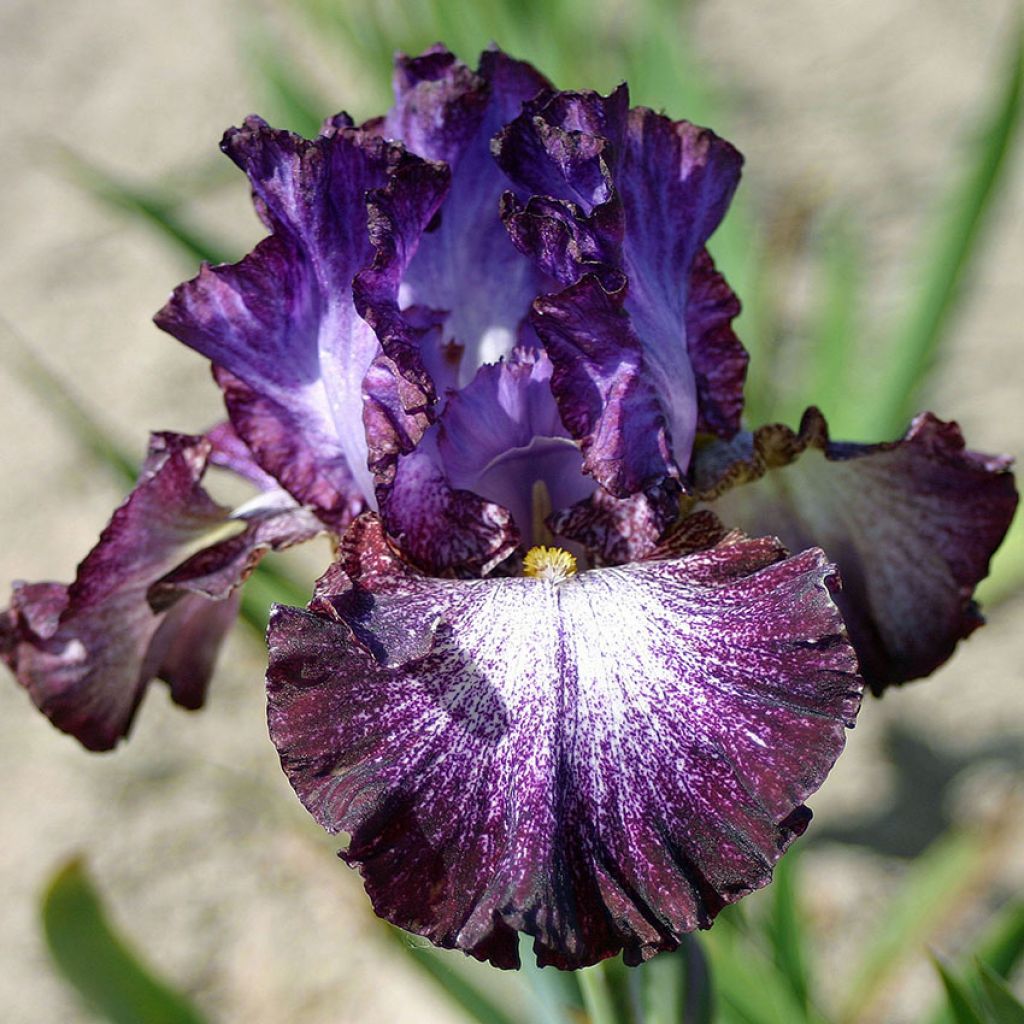

Iris germanica Ball of Confusion
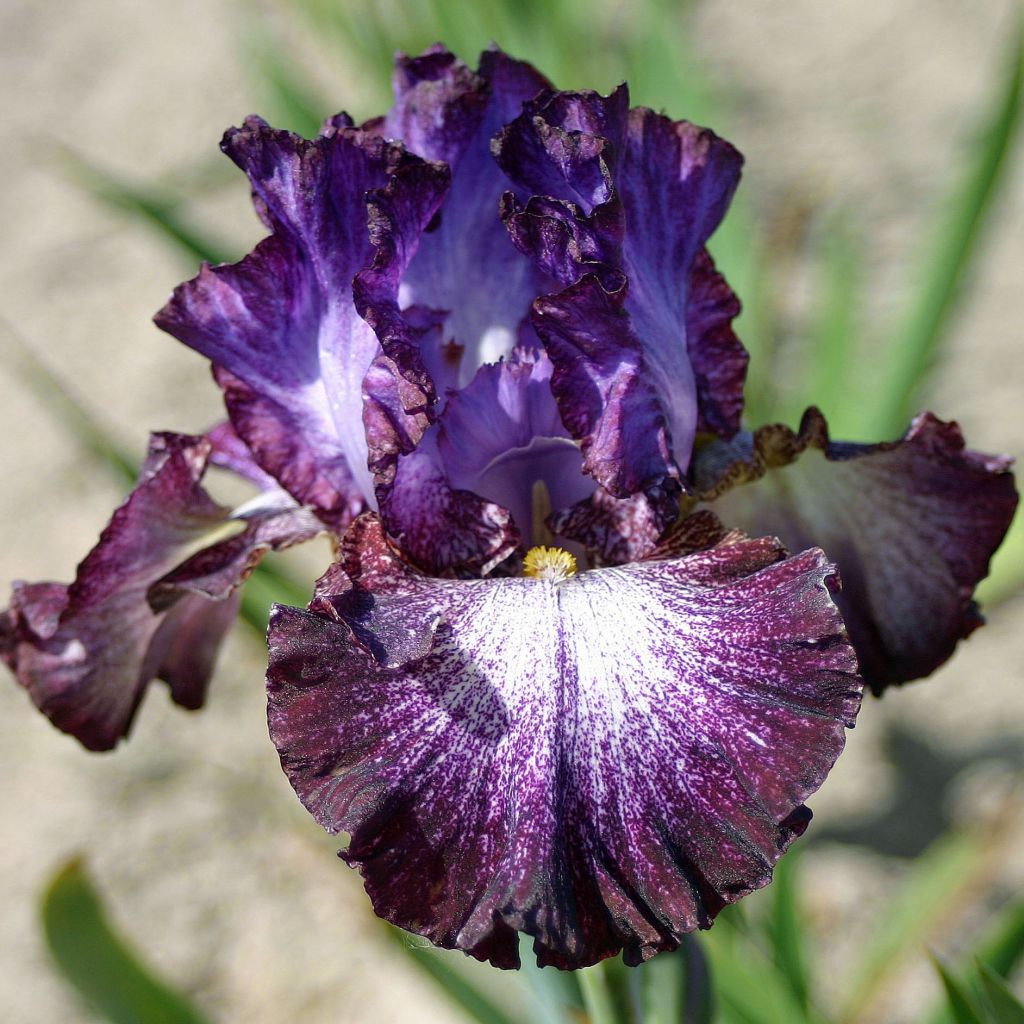

Iris germanica Ball of Confusion
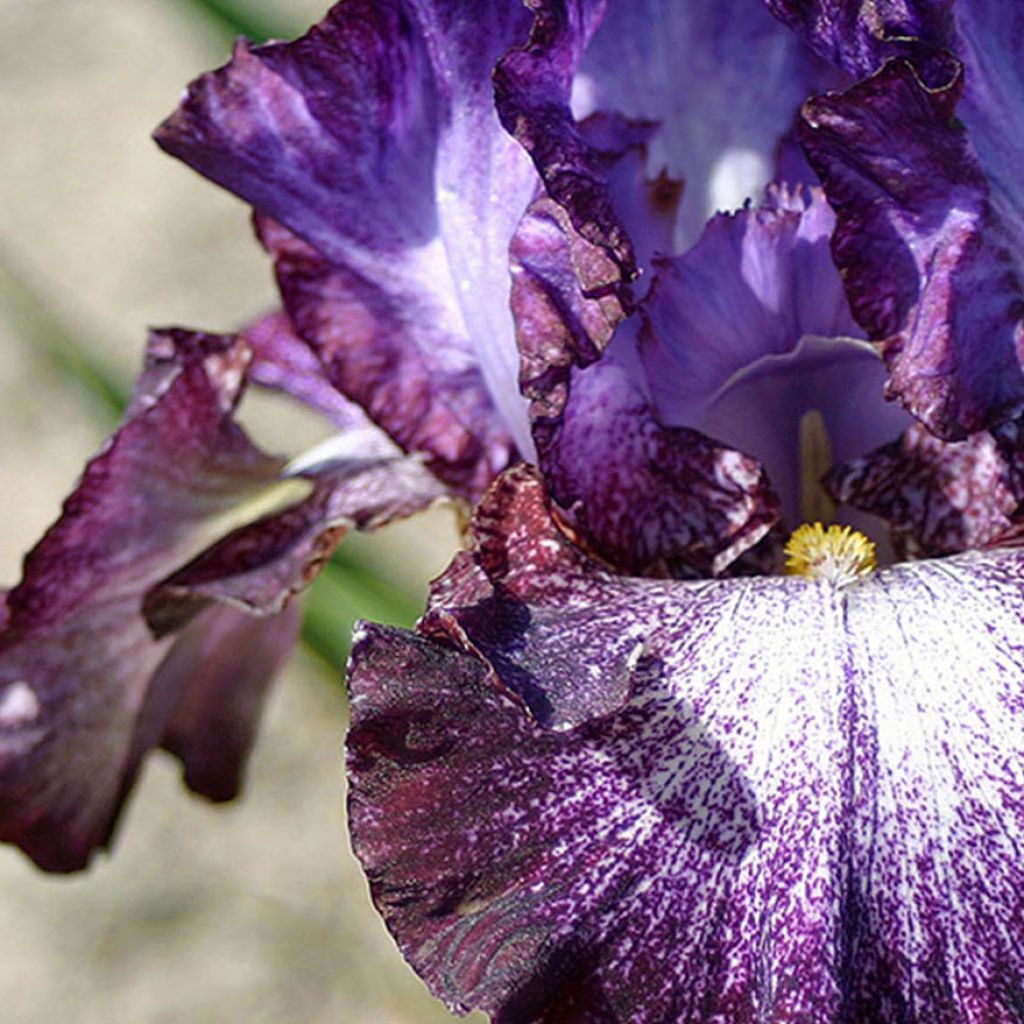

Iris germanica Ball of Confusion
Iris Ball of Confusion
Iris germanica Ball of Confusion
German Iris, Bearded Iris
Special offer!
Receive a €20 voucher for any order over €90 (excluding delivery costs, credit notes, and plastic-free options)!
1- Add your favorite plants to your cart.
2- Once you have reached €90, confirm your order (you can even choose the delivery date!).
3- As soon as your order is shipped, you will receive an email containing your voucher code, valid for 3 months (90 days).
Your voucher is unique and can only be used once, for any order with a minimum value of €20, excluding delivery costs.
Can be combined with other current offers, non-divisible and non-refundable.
Why not try an alternative variety in stock?
View all →This plant carries a 12 months recovery warranty
More information
We guarantee the quality of our plants for a full growing cycle, and will replace at our expense any plant that fails to recover under normal climatic and planting conditions.
Does this plant fit my garden?
Set up your Plantfit profile →
Description
Iris 'Ball of Confusion' is one of the bearded irises that stands out in spring and makes us look forward to the next spring, to once again enjoy its beautiful frilly flowers in shades of blue-mauve to purple on a white background. Its original, colourful, and bright flower is composed of 3 upper petals heavily dotted with medium blue-violet and edged with purple, dominating 3 sepals bordered by a wide purple area, speckled and dotted with blue-violet and purple around a large white halo, with yellow-orange beards. It quickly forms beautifully flowering clumps in May-June. It is an unusual flower with a strong personality that will bring life to sunny flower beds, borders, and slopes.
The 'Ball of Confusion' Iris was introduced to the horticultural market in 2004 and is a rhizomatous, deciduous perennial plant which forms a clump from spring. It will reach approximately 90 cm (35in) high when in bloom. It will spread without a theoretical limit, with the centre gradually becoming less dense. The sword-shaped foliage is glaucous green and highly veined. Flower stalks appear in April and bloom in May. The astonishing and particularly rich colour of this plant is enhanced by the texture of the frilly petals and sepals.
To accompany irises, choose plants that thrive in the sun and dry soil, preferably low-growing or with light foliage so as not to cast shade on them, and consider their appearance and flowering time. Gauras, for example, meet these criteria, and their later flowering will keep the flower bed attractive in summer. California poppies, perennial geraniums, salvias, and Libertias also complement irises very well. You can plant tall irises against a wall in relative shelter from the wind or in the background of shorter and earlier varieties. The vegetable garden can also be planted with a few clumps or borders of irises for cutting.
Iris Ball of Confusion in pictures
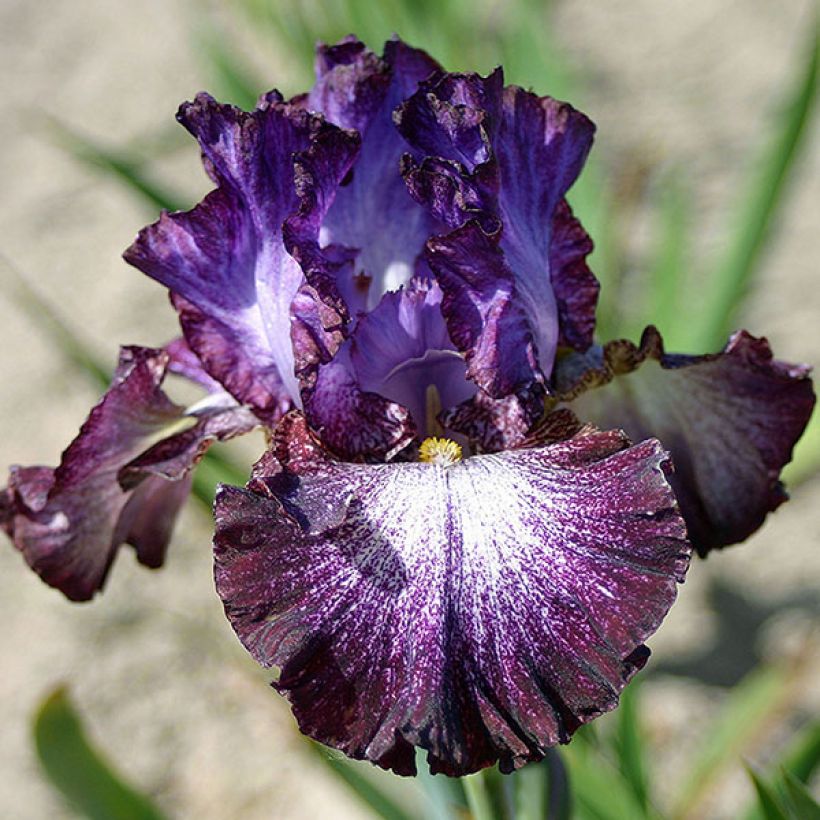

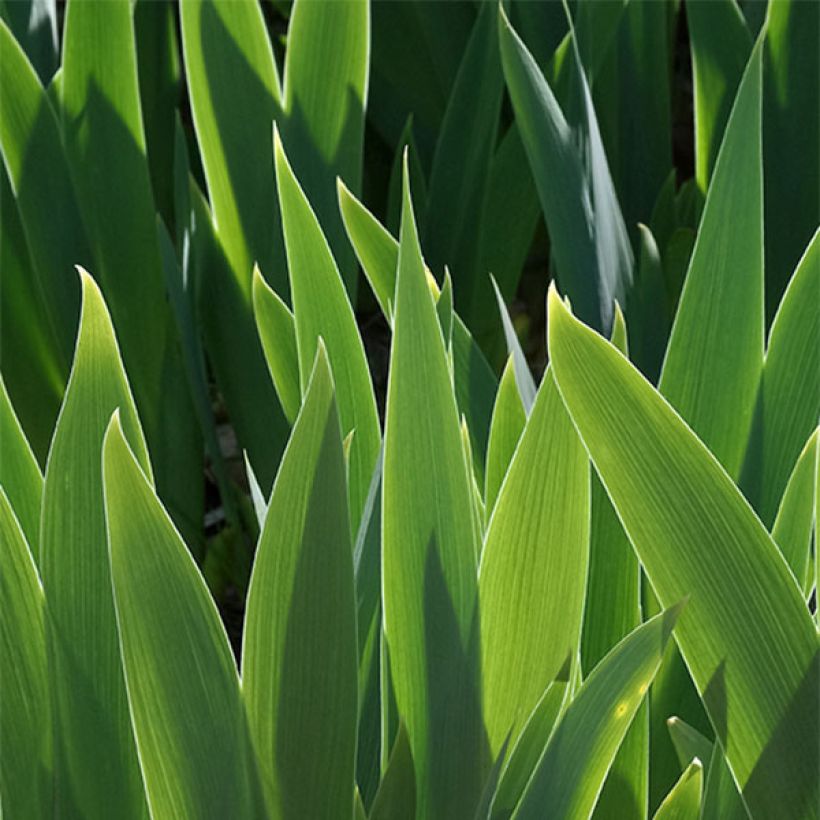

Flowering
Foliage
Plant habit
Botanical data
Iris
germanica
Ball of Confusion
Iridaceae
German Iris, Bearded Iris
Cultivar or hybrid
Other German Iris - Bearded Iris
View all →Planting and care
Do you have a sunny, warm, location, dry in summer? That's the ideal spot for irises! In the shade, they grow but do not flower. They are hardy and do not need winter protection. Well-drained soil is perfect, even if it is rather dry and chalky.
Plant from July to September. This allows the rhizomes enough time to grow and develop new roots before winter. They should be planted as soon as they are purchased for best results. A spacing of 30 to 40 cm (12 to 16in) for intermediate-sized irises is perfect. Dig a hole that is wide and deep enough, and make a conical mound of soil on which to place the rhizome and spread out the roots. Cover the roots. The rhizome must be left just above the surface of the soil to prevent rotting. In clay or wet soil, the rhizome can even be elevated on a slight mound. To make the soil cling to the roots, lightly firm and abundantly water immediately after planting. Water 2-3 times if necessary until the plant takes root. Always consider the direction of growth of the rhizomes by arranging them in a star shape, with buds and leaves facing outward. Plan to divide the irises every 4 years or so to give them fresh soil.
Planting period
Intended location
Care
Planting & care advice
This item has not been reviewed yet - be the first to leave a review about it.
Similar products
Haven't found what you were looking for?
Hardiness is the lowest winter temperature a plant can endure without suffering serious damage or even dying. However, hardiness is affected by location (a sheltered area, such as a patio), protection (winter cover) and soil type (hardiness is improved by well-drained soil).

Photo Sharing Terms & Conditions
In order to encourage gardeners to interact and share their experiences, Promesse de fleurs offers various media enabling content to be uploaded onto its Site - in particular via the ‘Photo sharing’ module.
The User agrees to refrain from:
- Posting any content that is illegal, prejudicial, insulting, racist, inciteful to hatred, revisionist, contrary to public decency, that infringes on privacy or on the privacy rights of third parties, in particular the publicity rights of persons and goods, intellectual property rights, or the right to privacy.
- Submitting content on behalf of a third party;
- Impersonate the identity of a third party and/or publish any personal information about a third party;
In general, the User undertakes to refrain from any unethical behaviour.
All Content (in particular text, comments, files, images, photos, videos, creative works, etc.), which may be subject to property or intellectual property rights, image or other private rights, shall remain the property of the User, subject to the limited rights granted by the terms of the licence granted by Promesse de fleurs as stated below. Users are at liberty to publish or not to publish such Content on the Site, notably via the ‘Photo Sharing’ facility, and accept that this Content shall be made public and freely accessible, notably on the Internet.
Users further acknowledge, undertake to have ,and guarantee that they hold all necessary rights and permissions to publish such material on the Site, in particular with regard to the legislation in force pertaining to any privacy, property, intellectual property, image, or contractual rights, or rights of any other nature. By publishing such Content on the Site, Users acknowledge accepting full liability as publishers of the Content within the meaning of the law, and grant Promesse de fleurs, free of charge, an inclusive, worldwide licence for the said Content for the entire duration of its publication, including all reproduction, representation, up/downloading, displaying, performing, transmission, and storage rights.
Users also grant permission for their name to be linked to the Content and accept that this link may not always be made available.
By engaging in posting material, Users consent to their Content becoming automatically accessible on the Internet, in particular on other sites and/or blogs and/or web pages of the Promesse de fleurs site, including in particular social pages and the Promesse de fleurs catalogue.
Users may secure the removal of entrusted content free of charge by issuing a simple request via our contact form.
The flowering period indicated on our website applies to countries and regions located in USDA zone 8 (France, the United Kingdom, Ireland, the Netherlands, etc.)
It will vary according to where you live:
- In zones 9 to 10 (Italy, Spain, Greece, etc.), flowering will occur about 2 to 4 weeks earlier.
- In zones 6 to 7 (Germany, Poland, Slovenia, and lower mountainous regions), flowering will be delayed by 2 to 3 weeks.
- In zone 5 (Central Europe, Scandinavia), blooming will be delayed by 3 to 5 weeks.
In temperate climates, pruning of spring-flowering shrubs (forsythia, spireas, etc.) should be done just after flowering.
Pruning of summer-flowering shrubs (Indian Lilac, Perovskia, etc.) can be done in winter or spring.
In cold regions as well as with frost-sensitive plants, avoid pruning too early when severe frosts may still occur.
The planting period indicated on our website applies to countries and regions located in USDA zone 8 (France, United Kingdom, Ireland, Netherlands).
It will vary according to where you live:
- In Mediterranean zones (Marseille, Madrid, Milan, etc.), autumn and winter are the best planting periods.
- In continental zones (Strasbourg, Munich, Vienna, etc.), delay planting by 2 to 3 weeks in spring and bring it forward by 2 to 4 weeks in autumn.
- In mountainous regions (the Alps, Pyrenees, Carpathians, etc.), it is best to plant in late spring (May-June) or late summer (August-September).
The harvesting period indicated on our website applies to countries and regions in USDA zone 8 (France, England, Ireland, the Netherlands).
In colder areas (Scandinavia, Poland, Austria...) fruit and vegetable harvests are likely to be delayed by 3-4 weeks.
In warmer areas (Italy, Spain, Greece, etc.), harvesting will probably take place earlier, depending on weather conditions.
The sowing periods indicated on our website apply to countries and regions within USDA Zone 8 (France, UK, Ireland, Netherlands).
In colder areas (Scandinavia, Poland, Austria...), delay any outdoor sowing by 3-4 weeks, or sow under glass.
In warmer climes (Italy, Spain, Greece, etc.), bring outdoor sowing forward by a few weeks.






























